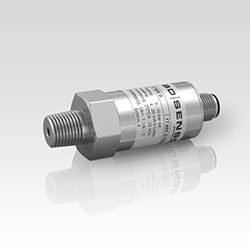Introduction
Efficiently measuring the level of a tank is crucial in various industries, including manufacturing, chemical processing, agriculture, and water management. Accurate level measurement ensures optimal process control, prevents overflow or underfilling, and aids in inventory management. Several techniques and technologies are available for measuring tank levels, each with its advantages and limitations. This article will explore some of the most used methods for measuring tank levels.

1. Float and Tape Method:
The float and tape method is one of the oldest and simplest techniques for measuring tank levels. It involves a float that rests on the liquid surface inside the tank and is attached to a tape marked with level measurements. As the liquid level changes, the float moves along the tape, providing a visual indication of the level.
This method is cost-effective and reliable for certain applications but can be less accurate due to factors like tape stretching, temperature changes, and liquid density variations. It is suitable for non-critical applications where high precision is not essential.
2. Sight Glasses:
Sight glasses are transparent tubes or windows installed on the side of a tank. Operators can visually assess the liquid level by observing the liquid’s height inside the sight glass. While simple and intuitive, this method is best suited for small tanks and environments where human observation is feasible.
Sight glasses have limitations, such as restricted application in hazardous or inaccessible areas and dependence on the operator’s interpretation. They are primarily used for visual inspection and backup measurements.
3. Ultrasonic Level Sensors:
Ultrasonic level sensors utilize sound waves to measure the distance between the sensor and the liquid surface. A transducer emits an ultrasonic pulse that travels to the liquid’s surface and reflects back. By measuring the time, it takes for the pulse to return, the sensor calculates the liquid level.
Ultrasonic sensors are non-contact and suitable for various liquids, including corrosive substances. However, factors like vapors, foam, or irregular liquid surfaces can affect accuracy. Additionally, temperature variations can influence the speed of sound, impacting measurement precision.
4. Radar Level Sensors:
Radar level sensors employ microwave radiation to measure the distance between the sensor and the liquid surface. They are divided into two types: guided wave radar and non-contact radar. Guided wave radar sensors use a probe that extends into the liquid, while non-contact radar sensors emit waves from a distance.
Radar sensors are highly accurate, even in challenging environments with dust, vapors, or extreme temperatures. They are suitable for a wide range of liquids and tanks. However, their complexity and higher cost might be a drawback for some applications.
5. Pressure Transmitters:
Pressure transmitters measure the pressure exerted by the liquid in the tank at a specific depth. The pressure reading is then converted into a level measurement using the known liquid density and the height of the liquid column.
This method is dependable and accurate, but it requires knowledge of the liquid’s density, which might change with temperature or composition variations. Pressure transmitters are commonly used in applications where precise level control is essential.
6. Capacitance Level Sensors:
Capacitance sensors work based on the capacitance formed between the sensor’s probe and the liquid. As the liquid level changes, the capacitance changes, allowing the sensor to determine the level.
Capacitance sensors are suitable for various liquids and can handle corrosive materials. However, they might be affected by factors like coating buildup on the probe or variations in dielectric constant.
7. Hydrostatic Level Sensors:
Hydrostatic level sensors rely on the hydrostatic pressure at a certain depth to infer the liquid level. A pressure sensor at the bottom of the tank measures the pressure exerted by the liquid column above it.
This method is accurate and requires minimal calibration. However, it is essential to consider the liquid’s density and the effect of atmospheric pressure changes.
8. Magnetostrictive Level Sensors:
Magnetostrictive sensors use the principle of magnetostriction, where a wire’s properties change in the presence of a magnetic field. The sensor generates a pulse along a wire, and the interaction with the magnetic float determines the position of the liquid level.
These sensors are accurate and have a fast response time. However, they can be more expensive than other methods.
Conclusion
Measuring tank levels is a critical aspect of process control and resource management across various industries. The choice of measurement technique depends on factors like accuracy requirements, the nature of the liquid, environmental conditions, and budget constraints. Each method has its strengths and limitations, and selecting the appropriate technology requires careful consideration of these factors. From simple visual methods to advanced electronic sensors, the options available today offer solutions for a wide range of applications, contributing to operational efficiency and safety.
Selecting the Appropriate Technology for Measuring Tank Levels
Have questions about measuring tank levels? Contact us today for more information!
